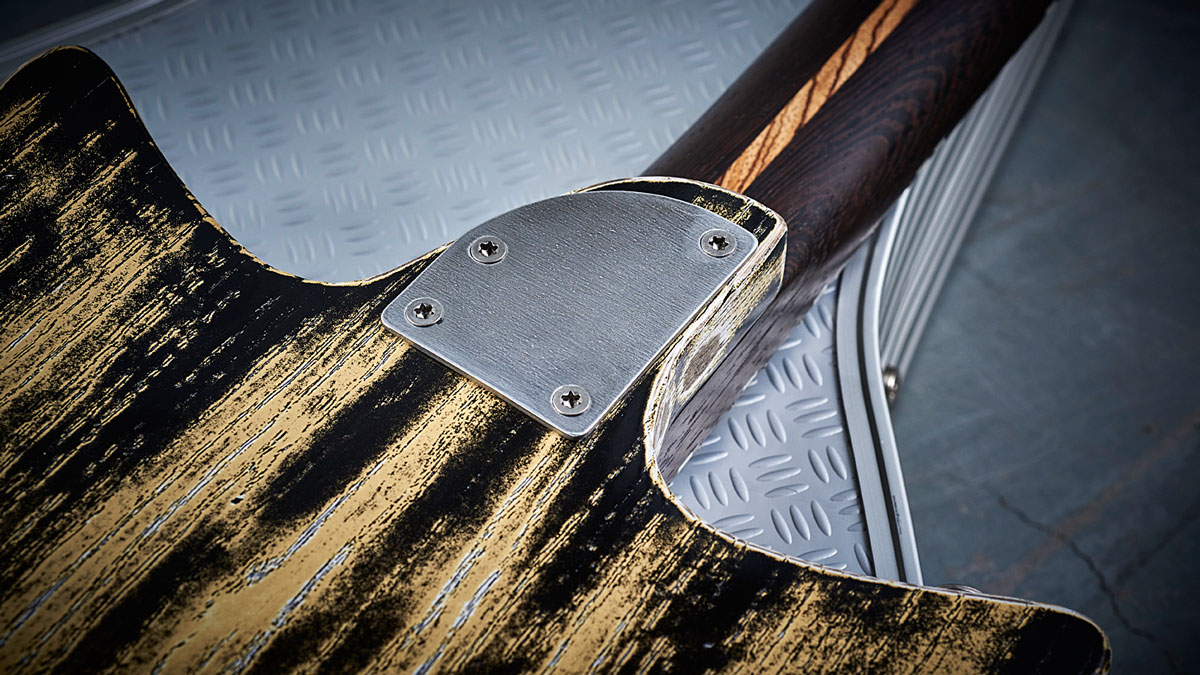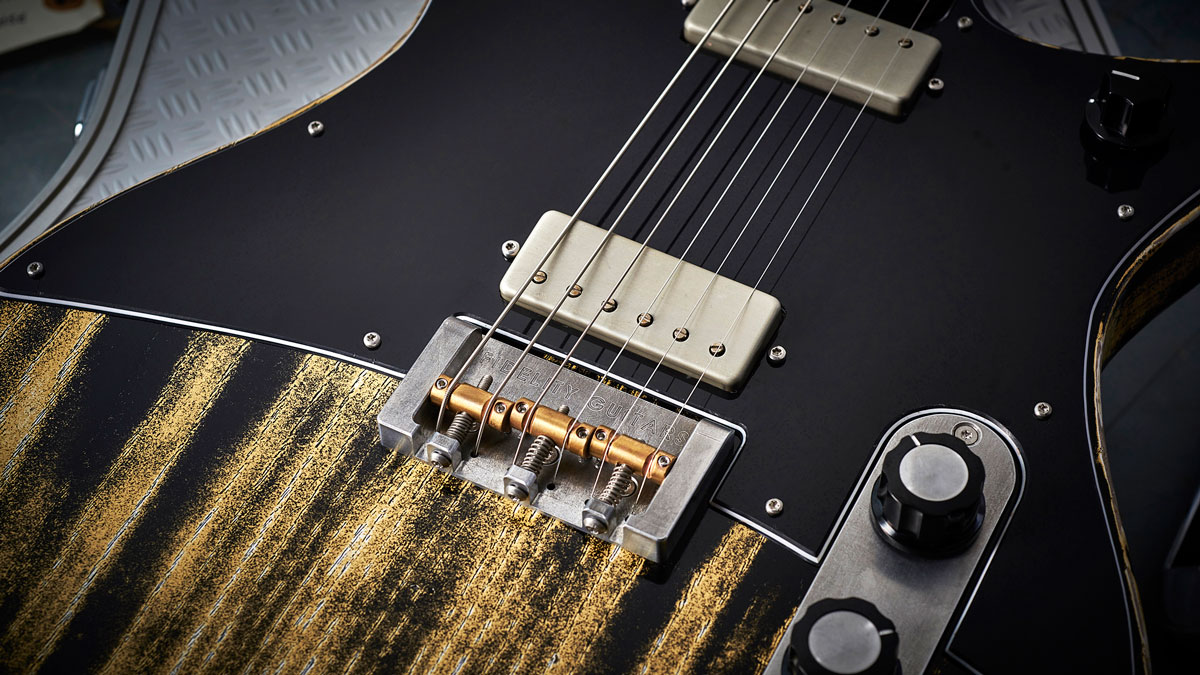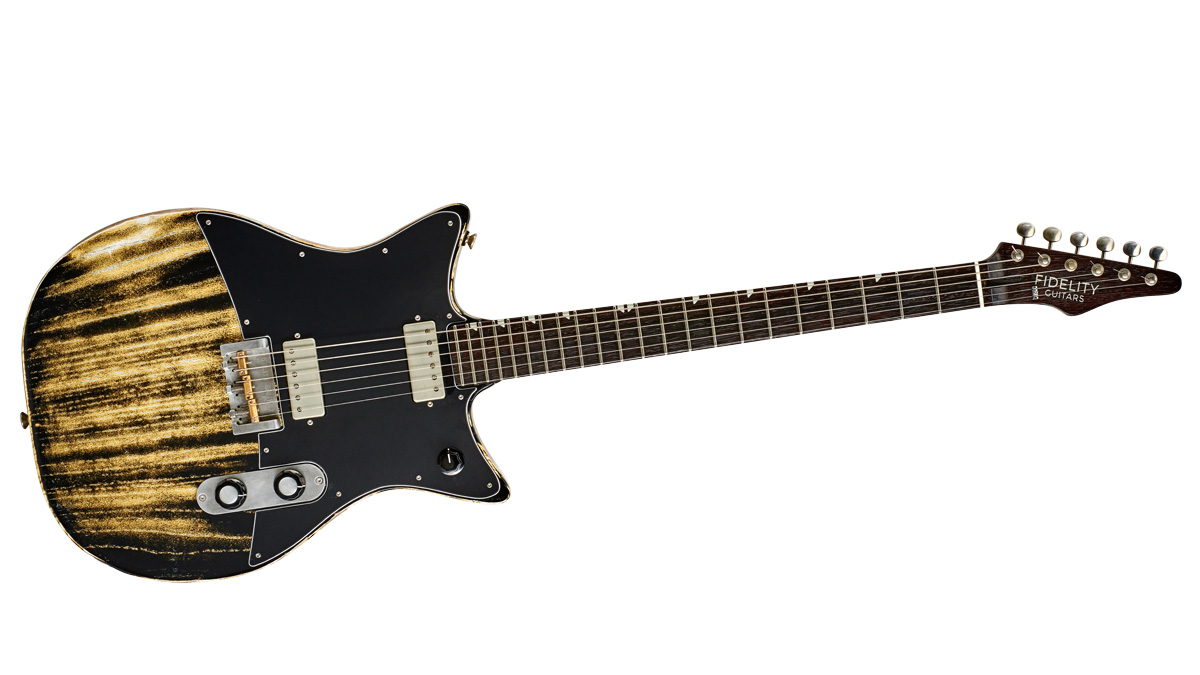MusicRadar Verdict
If you hanker for different retro-informed sounds, here’s a hugely valid choice.
Pros
- +
Style, finish, retro sounds, hardware and pickup choice.
Cons
- -
Not everyone will get the far from mainstream vibe.
- -
The neck shape won’t be for everyone, nor that rotary pickup selector.
MusicRadar's got your back
Let’s face it, whether you’re a musician or a guitar-maker you have a choice between imitation or trying to make your own way.
The former could mean you’re in a comfort zone and (more than likely) means you’ll get paid, while the latter original path can be a harder road to travel. It’s that second road that Cambridge-based maker Matt Oram has chosen to plough with his stylishly unique and hugely characterful retro-styled Fidelity guitars.
It’s been a little over a year since Matt unveiled his original Double Standard design followed by the JB (named after his brother-in-law, John Barlow). Both guitars are eye-catchingly different.
The 22-fret JB features a ‘Gibson’ scale with bouts at 320mm and symmetrical horns.
The guitar can be ordered with hardtail or vibrato (£1,799 and £1,999 respectively). Our JB uses uses Matt’s own-design open-backed bridge and has thru-body stringing anchored at the back of the body via a 20mm-thick brass inset plate to, says Matt, “add a little meat.”
Yet it’s the finish that draws our initial attention. The striped Desert Sunrise of the JB is described by Matt as “gloss Black over Desert Sand over White nitrocellulose,” which is then cut back in a purposely ‘random’ striped fashion.
As much as the body shape and finishe polarises opinion, so to will the neck. The guitar uses a one-piece wenge (maple is an option) construction with a rear zebrawood stripe to cover the route hole for the truss rod. It fixes to the body, with bolts not screws, into threaded brass ferrules inset into the necks.

Truss-rod access is behind the nut and the head is quite small and minimalist. While the staggered-height Gotoh locking tuners with grommet-style bushings are an excellent choice and provide plenty of back angle behind the nut, Matt prefers to use a string-tree on the upper two strings to maximise down pressure over the nut. And, like the frets, both bone nuts are beautifully fettled and polished with rounded edges.
The neck shape however, might divide opinion - the nut width is (slightly) on the thin side of Fender standard, string spacing is a little cramped at the nut - approximately 34.5mm - although that opens out to modern spacing at the bridge.
While this model can be ordered with pickups of your choice, Matt favours units from Mojo - as here - or The Creamery (both made in the UK). The Double Standard goes for a Gold Foil Soapbar at neck and a P90-sized Mojotron Blade at bridge: both screwed to the body. The JB plumps for a set of Mojo’s mini humbuckers mounted on the large black ply scratchplate.
Control set-up, meanwhile, sees large knobbed volume and (no-load) tone controls on a reduced Tele-like aluminium plate, while the knob on the tip of the treble horn is a four-way rotary pickup switch that selects bridge, both in series, both in parallel, and neck.
All the metal parts are nicely aged to match the light relic’ing of the bodies - this guitar unquestionably captures a vintage vibe and certainly looks like it has already been on a gig... or three.
Feel and sounds
There’s a good light weight to this instrument; it is comfortable enough on your lap, very slightly neck heavy strapped on but nothing you can’t manage.
The JB feels slightly more neck heavy than the recently reviewed Double Standard, and like the Double Standard, feels almost delicate but certainly resonant and lively in the hand. It sounds a little more ‘conventional’ in terms of its acoustic ring and quite why mini humbuckers are derided is beyond us.
Certainly on this platform there’s a balance of clear highs with vintage-like low power that makes for beautifully textured, punchy rhythms and biting - but not over thin - leads from the bridge and clear definition from the PAF-y neck.
Again not everyone will get on with the rotary pickup switch (which is nowhere near as fast as either a toggle or a lever), but the fuller, louder more Dano-like series linkage works well on both to provide a fat-but-clear sound that’s contrasted by the more open and lower output parallel mix. Both selections add to the character that summons up a host of voices - Danelectro, Gretsch, Fender, Rickenbacker, Supro - and consequently suit anything from reverbed and tremolo’d cleans, fuzzier punk/garage rock grit, to clean-edged classic rock, all informed with a chime and jangle that’s bright yet musical.

If our ratings were based on vibe alone this stylish retro-themed piece would score 5. Design aside, it is nicely put together, with top-drawer hardware and pickups, and an individual handmade feel that’s the antithesis of the ‘sterile’ modern production instrument. Bland, in either style or sound, it most definitely is not.
Price? Although far from impulse purchases this guitar includes a smart aluminium, shaped hard case and a Heistercamp leather/cotton webbing strap and, of course, can be custom spec’d, with the quoted prices, to a large degree in terms of voicing and finish.
We’d be tempted to go for a more mainstream neck shape and would probably spec a lever switch to select the pickups, but both features are part of the different drive that, bundled in with the cool looks, makes for such a hugely attractive proposition for the right player.
Dave Burrluck is one of the world’s most experienced guitar journalists, who started writing back in the '80s for International Musician and Recording World, co-founded The Guitar Magazine and has been the Gear Reviews Editor of Guitarist magazine for the past two decades. Along the way, Dave has been the sole author of The PRS Guitar Book and The Player's Guide to Guitar Maintenance as well as contributing to numerous other books on the electric guitar. Dave is an active gigging and recording musician and still finds time to make, repair and mod guitars, not least for Guitarist’s The Mod Squad.
“Built from the same sacred stash of NOS silicon transistors and germanium diodes, giving it the soul – and snarl – of the original”: An octave-fuzz cult classic returns as Jam Pedals resurrects the Octaurus
What’s the buzz? Meet Yellowjacket, Cherry Audio's recreation of EDP’s trend-setting Wasp from 1978
“A fabulous trip through all eight songs by 24 wonderful artists and remixers... way beyond anything I could have hoped for”: Robert Smith announces new Cure remix album











